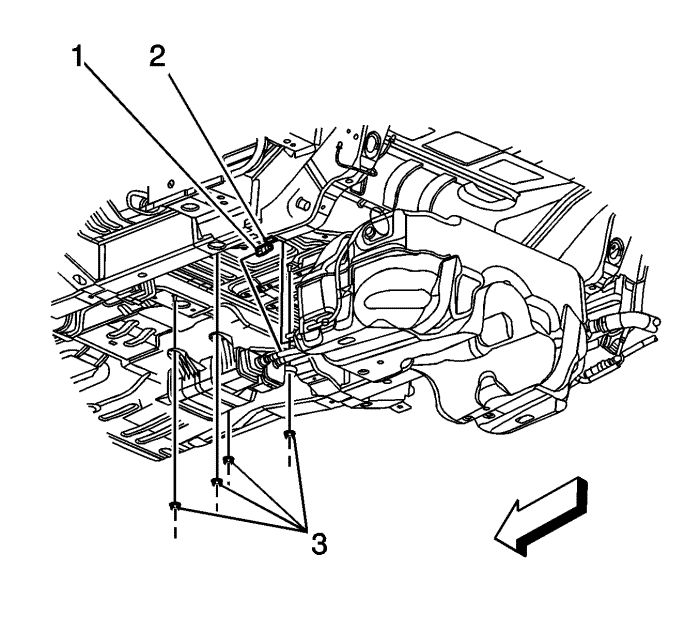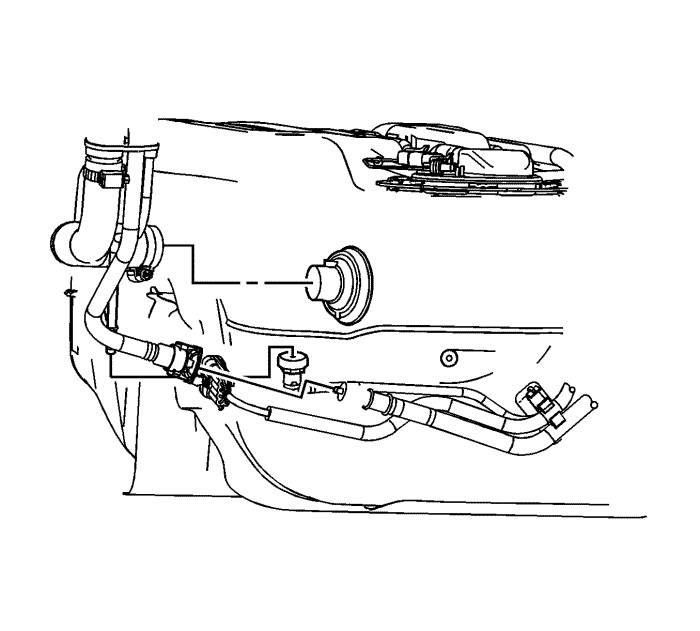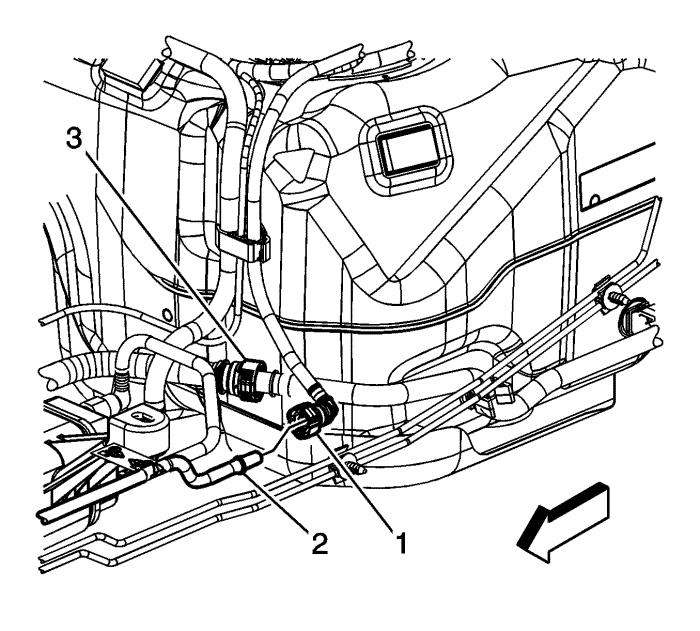Captiva |
||||||||
|
|
|
|||||||
Warning: Do not allow smoking or the use of naked flames in the area where work on the fuel or EVAP system is taking place. Anytime work is being done on the fuel system, disconnect the negative battery cable, except for those tests where battery voltage is required.
Warning: Fuel supply lines will remain pressurised for a long period of time after the engine is shutdown. This pressure must be relieved before servicing the fuel system.

Warning: Whenever fuel lines are removed, catch fuel in an approved container. Container opening must be a minimum of 300 mm (12 in) diameter to adequately catch the fluid.
Caution: Clean all fuel pipe connections and surrounding areas before disconnecting the fuel pipes to avoid contamination of the fuel system.


Caution: Do not bend the fuel tank straps. Bending the fuel tank straps may cause damage to the straps.
Note: Do not lower the rear frame. It is not necessary to lower the rear frame for fuel tank removal.

Caution: Refer to Fastener Caution in the Preface section.


| 15.1. | Cycle the ignition ON for 5 seconds and then OFF for 10 seconds. |
| 15.2. | Repeat the previous step twice. |
| 15.3. | Crank the engine until it starts. The maximum starter motor cranking time is 20 seconds. |
| 15.4. | If the engine does not start, repeat steps 15.1-15.3. |
| © Copyright Chevrolet. All rights reserved |